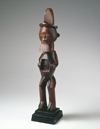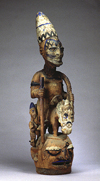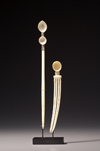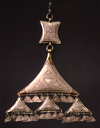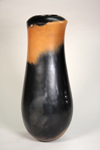Africa
The Cantor Arts Center’s African art collection includes works from across the continent, dating from the pre-dynastic periods of ancient Egypt to the present day. Of the nearly 2500 objects in the African collection, about 1300 works originate from ancient Egyptian and Coptic traditions. The remaining works, about 1200, were made in diverse sub-Saharan cultures during the late 19th to the mid 20th centuries.
The Cantor’s sub-Saharan collection is especially strong in figurative arts made mostly by western and central African artists. Also represented are utilitarian objects and body adornment made by East African artists, as well as a large selection of metal, leather, and basketry made by the contemporary Tuareg artists of Niger. Acquisitions of works by Moroccan artist Lalla Essaydi and Kenyan artist Magdalene Odundo heralded a new direction in the Cantor’s collection development, which now includes contemporary works by artists from Africa and its diasporas who work in an international style.
The permanent display of African art is divided into three chronological sections. In the first gallery, visitors encounter contemporary works made in a variety of media from the 1950s to the present, by artists living in Africa and the Diaspora. The next space presents African arts from the 16th to the mid-20th century. The final gallery features the oldest African arts in museum collections, ranging from pre-dynastic Egypt to 15th-century sub-Saharan cultures. The earliest antiquities on view, pottery from approximately 4000–3100 BCE, predate the emergence of a single powerful leader and the unification of Egypt under the Pharaohs. Each section is arranged thematically to correlate objects throughout the ancient, historic, and contemporary sections of the reinstallation.
Search collections. Best viewed in Firefox. Download Firefox.
See selections from the Cantor's collection in the Google Art Project.







